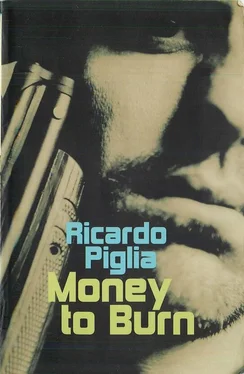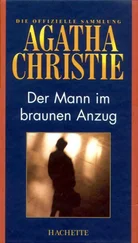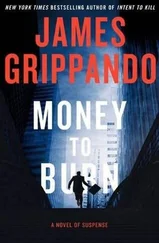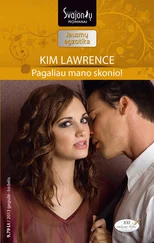It will always remain a mystery to me why the motives for recounting particular stories lie dormant for years on end, awaiting the proper moment to make their mark. I left off the project in 1970 and stored the drafts and the supporting material at my brother's home. Some time later, in the midst of moving house, I came across the box containing the manuscripts and documents, including the first results of my research and the first version of my book. In the summer of 1995, I began writing it all over again, giving it a complete overhaul in order to be absolutely faithful to the facts. The events it recounted were now so distant and hermetically closed that they resembled the lost memories of a lived experience. I had almost forgotten what they were, so much so they appeared new and nearly unknown to me, after a period of more than thirty years. This distance has helped me to work with the story as if it were the account of a dream.
It seems to me that this dream opens with an image. I would like to end this book with the memory of this image, meaning the memory of the young girl travelling on the train to Bolivia, leaning out of the window with a serious expression on her face, tranquil and without any parting gesture, while I, standing on the empty station platform, watch her recede into the distance.
Buenos Aires, 25 July 1997
About the Author and the Translator
Ricardo Piglia is Professor of Latin American Literature at Princeton University and is the author, among other works, of Respiración artificial (1980) La ciudad ausente (1992) and Critica y ficción (1986) — a collection of interviews and essays on key Argentine writers such as Borges, Arit and Sarmiento.
Amanda Hopkinson is a Senior Research Fellow at Cardiff University Her previous translations include José Saramago's Voyage to Portugal and Paul Coelho's The Devil and Miss Prym.
{1} In August 1963 a fourteen-man commando unit robbed 14,000 pesos from the Bank's health centre in the district of Caballitos. All fourteen were members of the Tacuara gang', who took their name from the prison where they'd done time, in the town of the same name, Entre Ríos province in the northeast of the country. They were also the most dangerous of the extreme right-wing activists in the Peronist movement. On the one hand they were linked to the Arab League and on the other to the Nazi war criminals who had found a safe haven in the Argentine provinces. The common thread lay in violent action and crude anti-Semitism.
{2} Alianza Libertadora Nacionalista , (ALN), Argentine fascist movement active between 1931 and 1955.
{3} Founders of the National Liberation Alliance (ALN).
{4} 'The Old Man': in his period of exile, in 1965, Perón was already seventy years old. He would make a triumphant return to office in 1973, dying six months later. The CGT (Confederación General de Trabajadores) was the Peronist-controlled Trades Union Congress.
{5} Lit. a charrúa , of an 'indian' tribe north of the River Plate.
{6} 'Che' — Ernesto Guevara notwithstanding — is not a proper name. It's what every Argentine male informally calls another. Something like 'mate'.
{7} Ranquel or Mapuche tribes are, literally, 'people of the swamp', who settled in the northwest Pampa and south of Córdoba in the seventeenth and eighteenth centuries. The Coliqueo Indians' settled southwest of San Luis.
{8} San Martin was the liberator of the Southern Cone from Spanish rule, and a brilliant military strategist. The most famous equestrian statue in Buenos Aires is dedicated to him, in the park at the centre of the Plaza San Martin.
{9} Society of Musical Composers, also a coffee-house and meeting-place.
{10} i.e. 3.3 kilometres out of town.
{11} Mate is a typically gaucho drink, traditionally drunk from a gourd through a silver straw, at intervals through the working day.
{12} Expressed in the original as a gauchada , an ironic reference to the fact that gauchos can always be counted on to honour pledges — and defend their honour — and that of others, particularly vulnerable women.
{13} Cacho means a chub, as in the fish.
{14} Movimentismo was the amalgamation of popular movements that Peronism sought to incorporate. It led to the formation of numerous 'fronts', military or not, but all rigidly disciplined and bureaucratized as branches of 'populism'.
{15} Severino di Giovanni fled Italian fascism and joined an anarchist group in Buenos Aires in 1923. First he simply edited the flagship magazine Culmine , but Sacco and Vanzettťs execution in the States turned him to direct action, mainly through bombing North American business venues. Arrested by the police after a fusillade, he was executed on 1 February 1931. The Scarfó brothers were anarchist gangsters, a pair of brothers who raided banks, most famously the National City Bank in 1927. Juan Nicolás Ruggero (known by the diminutive Ruggerito) was the best-known member of a famous mafia family, who ran a gambling den at 400 Pavón Street. He was assassinated in 1933. Lezin, also known as 'the Astrologer', founded a terrorist group intending to seize political power in a putsch. Instead it declined into corruption and infighting and he was killed.
{16} This is a deliberate pun: la generala is a game of five dice, where the winner is he who achieves the highest score of the same number. But la generala is also Evita Perón, nationalist heroine of the right-wing Peronistas.
{17} In Italian in the original. Much of what is said takes place in lunfardo, harbour slang of the Neapolitan immigrants. E peccato , resonant of the Latin Mass, means both a sin and a shame in the colloquial sense of 'what a pity'.
{18} A John Wayne film from 1949, where the action is set on a Japanese island. It was seized from the Japanese by the US forces in 1945 after battles that took over 100,000 Japanese lives. It was restored to Japan only in 1968.
{19} Perhaps the most popular corrido (ballad) of the Mexican Revolution (1910-20) and a staple of dancehalls thereafter. The cucaracha (cockroach) of the title was apparently President Obregón, famously addicted to his marijuana.
{20} Servicio Oficial de Difusión, Radiotelevision y Espectáculos, answerable to Uruguay's Culture and Education Ministries.
{21} It resembles the French boules , with a 'toad' instead of a 'pig' that has to be hit.












